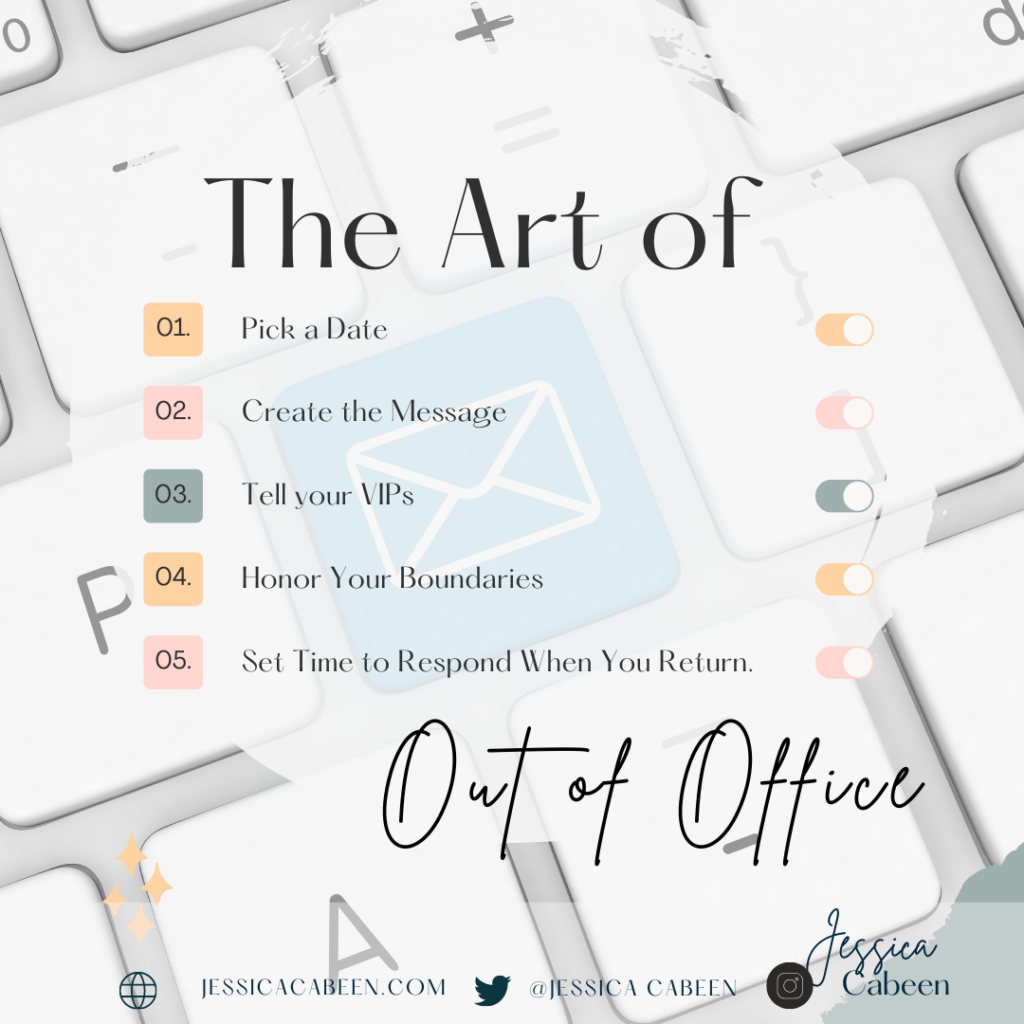So how are you? No really?
This past year has taught us many things about how we handle stress, how we seek time away with family and friends, and when to put firm boundaries between work and life.
As educators, we can feel the pull of being connected to our students and families we serve, while also wanting to disconnect for periods of time as well.
Jessica Cabeen
When I start to feel guilty about signing off for short periods of time I am drawn to this quote from The Mayo Clinic Guide to Stress-Free Living Fragmented attention fragments relationships.
Creating communication that lets others know when you are away gives you explicit permission to turn work off. One strategy I use to support signing off is the ‘out of office’ setting on my work email. And while it may sound simple to use this tool, there are steps to ensure the success of it.
Pick a date. Nervous about trying this strategy? Summer is a great time to start as email tends to be slower (and hint if you are an educator you should be taking time away especially if you are off-contract). Pick an upcoming weekend, or tag a Friday/Monday on for a long weekend. Make note of it on your online calendar and planner.
Create the message. So we have an important why to unplug for a weekend, for a vacation, for a day away. So how do we do it? Setting an out-of-office message is essential for setting and communicating boundaries to those you work with and serve. It can be a short a simple message conveying when you will be gone, when you will be back, and in an emergency who to contact.
Tell your VIPs. In my current position, I work year-round unless I take time away. To this summer I took my longest break since my parental leave for adoption ten years ago, a two-week break. In anticipation of this time away, and a little anxious about being gone, I made sure my core team knew I when I was going to be gone. I told them and also invited them to a calendar invite that said “Cabeen Vacation Days”. In preparation for the two weeks I would be out we looked at what was coming up and delegated some responsibilities while deferring a few until I returned.
Honor Your Boundaries. The hard part isn’t setting up the out-of-office message, the difficult part becomes not opening the email and responding to it when you have indicated you will be out of office.
How often does this happen? I am just waiting in line, it is a quick email check? Or I will check right away in the morning or at the end of the day so I don’t have so many messages to respond to when I return? As soon as you reply to someone when you have indicated you are gone you are breaking your own boundaries and unintentionally sending a message that your time away isn’t as important as it really should be.
As a whole educators could benefit from a sabbatical from email. Take it off your phone, leave your computer at home, delete the app, send all emails into a folder that you will open when you return. Take it off your phone, leave your computer at home, delete the app, send all emails into a folder that you will open when you return.
Set time to respond when you return. So it is the last day of your break from work. Instead of spending that day scrolling through emails, working to respond, and thinking about what is to come tomorrow, why not just wait to open them the day you are back? Prior to leaving set extra time on your calendar to read/respond to emails that day-not on the weekend or when you are still on vacation.
While is sounds weird to plan for your time away, setting up these boundaries and holding to them will ensure your time away from work is just that….time away.
Dream Big, Live Colorfully and Lead Boldly,
Jessica

Looking for more resources in writing an out of office? Check out the following blog posts:


Recent Comments